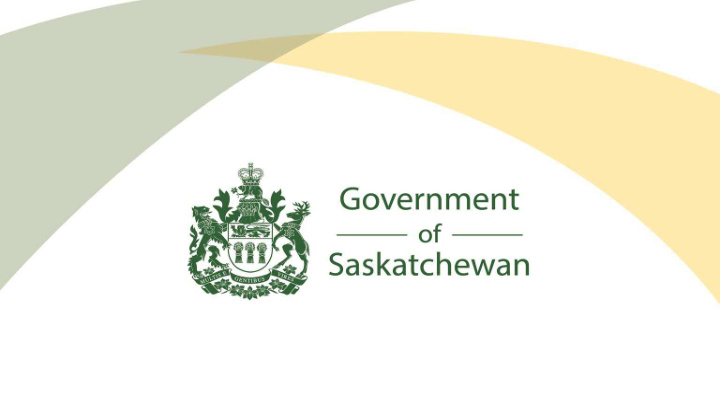



Nova Scotia Collaborative Emergency Centre (CEC) Model • CECs were recommended in the first report (July 2012) of the Health Care Innovation Working Group, led by Premiers Brad Wall and Robert Ghiz. • Nova Scotia developed the CEC model as a way to improve access to primary health care and emergency care.
Nova Scotia’s - Better Care Sooner (2010) Nova Scotia’s experience was: 1. People wait too long to see a doctor... weeks in some smaller communities. 2. People are confused about whom to call or where to go when they have a health question or concern.
Nova Scotia’s - Better Care Sooner 3. Doctors and nurses and other health-care workers trained in emergency care, are in short supply and could be used more effectively. 4. People go to their local emergency departments because they have no other choice.
Nova Scotia’s - Better Care Sooner 5. Doctors, nurses, and other health-care workers in smaller communities are expected to work at times when few patients need them. 6. People are worried that when they need ER care it won’t be there.
Saskatchewan’s Experience is Similar • Community hospital disruptions. • Poor access to primary health care services, which lead to: patient waits; congested emergency rooms; and patient dissatisfaction.
Saskatchewan’s Experience is Similar • Many family practices are open weekdays 9 to 5, so an ER visit is the only choice for people to get primary health care. • Community Hospitals currently require a physician to be on-call and accessible, which contributes to retention issues and disruptions.
Nova Scotia CEC – Care Teams • CEC teams provide 24 hour health services in a different way. • Physicians and nurse practitioners provide extended primary health care from 8 a.m. to 8 p.m. • Paramedics and registered nurses provide services on site supported by a Medical Oversight Physician from 8 p.m. to 8 a.m.
Nova Scotia CEC – Care Teams Day-time team – 8 a.m. to 8 p.m. • Provide primary health care through a collaborative team of physicians, nurse practitioners & others where available. • Offer same day or next day appointments. • Plan in place for urgent and emergent patients.
Nova Scotia CEC – Care Teams Night-time Team – 8 p.m. to 8 a.m. • Paramedic and RN on site supported by a Medical Oversight Physician by phone. • Committed to rapid, standard assessment of patients. • They arrive at one of three paths for the patient: Treat and Refer, Treat and Release, or Treat and Transfer. • The Paramedic and RN team call an oversight physician to review the assessment, and recommended care plan for each patient.
Team Dynamics • Physicians are provided with a better work-life balance through: Reduced on-call burden (as no longer on-call for emergencies after hours); and, Supports from other PHC team members. • Nurse Practitioner skills are utilized within daytime service to manage clinic presentations. • RN/Paramedic team collaborate on after-hours patient care, combining their skills and experience with support from an oversight physician.
The Model is about Patient Benefits • Nova Scotia experience has led to: Evening and weekend access to PHC providers; Access to same day and next day appointments; Which means patients don ’ t wait for PHC service; Stable access to urgent and emergent care; and Positive support from patients and providers.
Considerations for Saskatchewan • Nova Scotia has shared their model with Saskatchewan. • Nova Scotia standards have been reviewed to address Saskatchewan differences. • Regions are looking at this model to see where it might help stabilize services.
Considerations for Saskatchewan • A CEC will not be the right model for every community. • Health Regions are exploring this model with some communities. Regions will need to work with their local communities and health providers to ensure everyone understands how the model works and will impact the services and needs in the community. • We expect this model will be implemented in a few sites in 2013-14.
More Information on the CEC Model • Go to this page on the Health website: www.health.gov.sk.ca/nova-scotia-cecs • Contains: Knowledge Exchange information including presentations from Nova Scotia delegates Frequently Asked Questions
Nova Scotia CEC Model For more information contact: Ron Knaus Primary Health Services Branch Ministry of Health
Recommend
More recommend